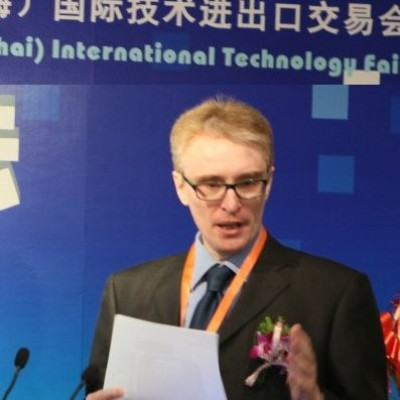Google Unveils Willow: A Quantum Leap in Computing
On December 9, 2024, Google made headlines with the announcement of Willow, its latest quantum computing chip. This groundbreaking technology promises to revolutionize the field of computation by solving complex problems at speeds unattainable by even the most advanced classical supercomputers. With its impressive capabilities, Willow represents a significant leap forward in the quest for practical quantum computing solutions.
The Evolution of Quantum Computing
Quantum computing has long been heralded as the next frontier in technology, capable of processing vast amounts of data and performing computations that are currently beyond the reach of classical computers. Traditional computers rely on bits as their fundamental unit of information, which can exist in one of two states: 0 or 1.
In contrast, quantum computers utilize qubits, which can represent both 0 and 1 simultaneously due to a phenomenon known as superposition.
This allows them to perform multiple calculations at once, exponentially increasing their processing power. However, the journey toward practical quantum computing has been fraught with challenges, particularly concerning error rates and qubit coherence. As researchers have sought to scale up quantum systems, maintaining stability and accuracy has proven difficult. Google's Willow chip addresses these challenges head-on.
Key Features of Willow
Unprecedented Speed
One of the most striking achievements of Willow is its speed. In a recent benchmark test known as Random Circuit Sampling (RCS), Willow completed computations in under five minutes. To put this into perspective, a top-tier classical supercomputer like Frontier would require approximately 10 septillion years to perform the same task—an unfathomable duration that far exceeds the age of the universe itself. This staggering difference highlights Willow's potential to tackle problems that are currently insurmountable for classical systems.
Error Correction Breakthrough
Error correction has been a longstanding challenge in quantum computing. As more qubits are added to a system, error rates tend to increase, complicating computations and undermining reliability. Willow employs advanced error correction techniques that allow it to maintain low error rates even as it scales up. By organizing qubits into larger surfaces and utilizing sophisticated algorithms, Willow can significantly reduce errors as it increases its computational capacity. This breakthrough is crucial for achieving quantum advantage, where quantum computers can outperform classical systems in meaningful ways. Hartmut Neven, head of Google Quantum AI, emphasized that this achievement represents a major milestone in making quantum computing practical for real-world applications.
Implications for Various Industries
The implications of Willow's capabilities extend across numerous fields:
Healthcare and Drug Discovery
In healthcare, quantum computing could revolutionize drug discovery by simulating molecular interactions at an unprecedented scale and speed. This could lead to faster identification of potential drug candidates and more personalized medicine tailored to individual genetic profiles.
Financial Services
The financial industry stands to benefit significantly from quantum computing's ability to analyze vast datasets and optimize complex financial models. This could enhance risk assessment, fraud detection, and algorithmic trading strategies.
Artificial Intelligence
AI development could also be accelerated through quantum computing. Complex machine learning algorithms that require extensive computational resources could be run more efficiently on quantum systems like Willow, leading to faster advancements in AI technologies.
Climate Modeling
Addressing climate change requires sophisticated modeling of environmental systems. Quantum computers can process vast amounts of data related to climate patterns, enabling more accurate predictions and better-informed policy decisions.
Industry Reactions
The announcement of Willow has generated considerable excitement within the tech community and beyond. Following the unveiling, shares of Alphabet Inc., Google's parent company, surged by approximately 5%, reflecting investor optimism about the potential impact of this technology on future innovations. Notable figures in technology have also expressed their enthusiasm for Willow's capabilities. Elon Musk took to social media to praise Google's advancements, highlighting the significance of such breakthroughs in shaping the future landscape of technology.
The Road Ahead: Challenges and Considerations
While Willow's performance is undoubtedly impressive, experts caution that practical applications of quantum computing are still several years away. Many tasks performed by quantum computers remain theoretical or limited to specific benchmarks that do not necessarily translate into real-world solutions. Additionally, there are ongoing concerns about scalability and the infrastructure required to support large-scale quantum systems. As researchers continue to explore these challenges, collaboration between academia and industry will be essential for driving progress in quantum technology.
Google's introduction of the Willow chip marks a pivotal moment in the evolution of quantum computing. With its unprecedented speed and innovative error correction techniques, Willow stands poised to redefine what is possible in computation across various industries. As researchers work toward harnessing this technology for practical applications, the potential benefits for society are immense—from accelerating drug discovery to enhancing climate modeling.
As we look ahead, it is clear that while we are on the brink of a new era in computing with quantum technologies like Willow, there remains much work to be done before these systems can fully realize their transformative potential. The journey toward practical quantum computing is just beginning, but with advancements like those seen in Willow, the future looks promising indeed.









